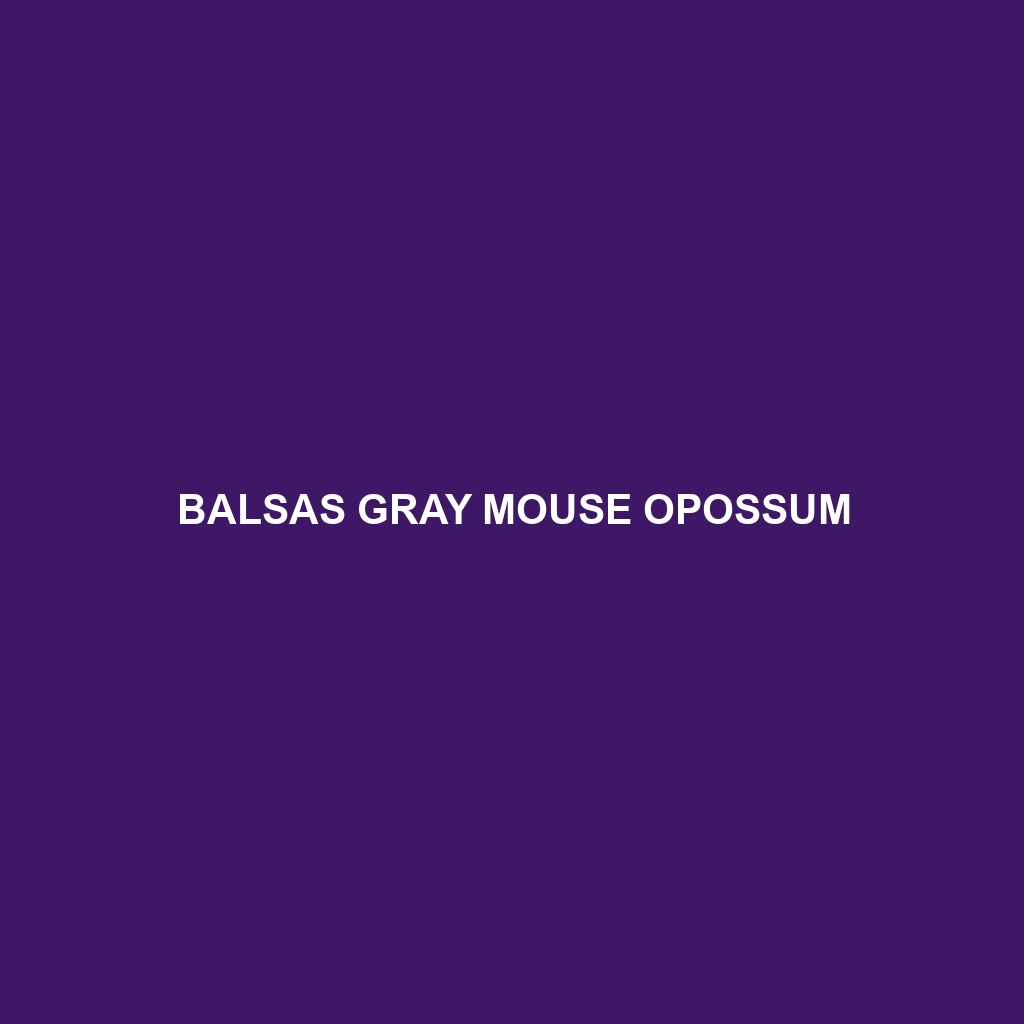Balsas Gray Mouse Opossum (Tlacuatzin canescens)
The Balsas Gray Mouse Opossum, scientifically known as Tlacuatzin canescens, is a small, nocturnal marsupial native to Mexico. This agile and elusive creature is part of the Didelphidae family and is primarily found in the Balsas River basin. Known for its distinctive gray fur and mouse-like size, the Balsas Gray Mouse Opossum plays a crucial role in the local ecosystem.
Physical Characteristics
Size: This opossum is relatively small, typically measuring around 8 to 12 centimeters (3 to 4.7 inches) in body length, with an equally long tail.
Weight: It weighs between 20 and 40 grams (0.7 to 1.4 ounces).
Coloration: The fur is predominantly gray, with the dorsal side being a darker, slate-gray color and the ventral side lighter, often a creamy or pale gray. The coloration provides excellent camouflage against the tree bark and forest floor.
Special Features: The Balsas Gray Mouse Opossum has large, rounded ears, sharp claws, and a prehensile tail that aids in climbing and grasping branches.
Behaviors
Social Interactions: These opossums are mostly solitary creatures, except during the breeding season. They are nocturnal and spend the majority of their waking hours foraging for food.
Feeding Habits: Their diet is omnivorous, consisting of fruits, insects, small vertebrates, and occasionally, nectar. This diverse diet helps them adapt to various environmental conditions.
Ecological Role: As both predator and prey, they help control insect populations and serve as food for larger predators. Additionally, by consuming fruits and dispersing seeds, they contribute to forest regeneration.
Habitat
Natural Habitat: The Balsas Gray Mouse Opossum inhabits tropical and subtropical dry forests, particularly those in the Balsas River basin of Mexico. They prefer areas with dense understory vegetation and ample tree cover.
Adaptations: Their arboreal lifestyle is supported by strong limbs and a prehensile tail that facilitates climbing. Their nocturnal habits reduce competition with diurnal species and help evade daytime predators.
Conservation Status
Current Status: The Balsas Gray Mouse Opossum is currently classified as “Least Concern” by the IUCN Red List. However, habitat destruction due to deforestation and agricultural expansion poses a threat to their populations.
Conservation Efforts: Efforts to conserve their habitat include establishing protected areas and promoting sustainable land-use practices in the region.
Fun Facts
Marsupial Pouch: Unlike many marsupials, female Balsas Gray Mouse Opossums do not have a full pouch. Instead, they have a simple pouch-like structure where they carry and nurse their young.
Tail Versatility: Their tail is not only prehensile but also serves as a storage site for fat reserves, which can be crucial during periods of food scarcity.
Agility: These opossums are incredibly agile and can leap significant distances between branches, a skill that aids in both foraging and escaping predators.
The Balsas Gray Mouse Opossum is a fascinating and integral part of its ecosystem, showcasing the incredible adaptability and diversity of marsupials. By understanding and protecting this small yet vital species, we contribute to the overall health and balance of their natural habitats.
